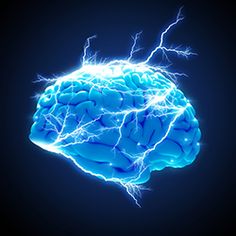Gabapentin, a versatile medication initially developed to treat seizures, has emerged as a powerful tool in the realm of pain management. This article delves into the miraculous effects of gabapentin dosage for alleviating various types of pain, exploring its mechanisms of action, efficacy in treating different pain conditions, factors influencing dosage decisions, and optimization strategies for achieving maximum relief. By shedding light on the intricacies of gabapentin therapy, this article aims to provide a comprehensive understanding of how this medication can unlock relief for individuals grappling with pain.
Learn more: Gabapentin Dosage for Pain | A Comprehensive Guide
1. Introduction to Gabapentin for Pain Management
Overview of Gabapentin as a Pain Medication
Gabapentin, often prescribed under the brand name Neurontin, is a medication primarily used to manage various types of pain, including nerve pain. It belongs to a class of drugs known as anticonvulsants but is also effective in treating chronic pain conditions.
History and Development of Gabapentin in Pain Management
Originally developed to treat epilepsy, gabapentin’s pain-relieving properties were discovered coincidentally. Since then, it has become a widely used medication for managing neuropathic pain and other chronic pain conditions.
2. Understanding Gabapentin Dosage and Mechanism of Action
How Gabapentin Works in Relieving Pain
Gabapentin works by modulating the activity of certain neurotransmitters in the brain and nervous system, which helps to reduce pain signals. Its exact mechanism in providing pain relief is not fully understood, but it is believed to affect calcium channels in nerve cells.
Factors Influencing Gabapentin Dosage
Gabapentin dosage is influenced by factors such as the type and severity of pain, individual tolerance, and any existing medical conditions. Dosage adjustments may be necessary to achieve optimal pain relief while minimizing side effects.
3. Efficacy of Gabapentin in Treating Various Types of Pain
Chronic Pain Conditions and Gabapentin Usage
Gabapentin has shown efficacy in managing chronic pain conditions such as fibromyalgia, diabetic neuropathy, and post-herpetic neuralgia. It is often used as part of a comprehensive pain management plan to improve quality of life for individuals suffering from long-term pain.
Neuropathic Pain Management with Gabapentin
Neuropathic pain, which results from nerve damage or dysfunction, is commonly treated with gabapentin due to its ability to target the underlying mechanisms of nerve-related pain. Gabapentin can provide relief and improve function in individuals with neuropathic pain.
4. Factors Influencing Gabapentin Dosage and Treatment Response
Individual Variability in Gabapentin Dosage
Each individual may respond differently to gabapentin, requiring personalized dosage adjustments to achieve the best pain relief with minimal side effects. Factors such as age, weight, kidney function, and other medications being taken can impact the appropriate dosage.
Managing Tolerance and Response to Gabapentin
Over time, some individuals may develop tolerance to gabapentin, necessitating dosage modifications or alternative treatments. Regular monitoring by healthcare providers is essential to ensure the medication continues to be effective in managing pain.
5. Common Side Effects and Considerations with Gabapentin Use
Understanding and Managing Side Effects
Gabapentin is like that friend who means well but can sometimes bring along some unwanted party crashers in the form of side effects. Common side effects include dizziness, drowsiness, and unsteadiness. Think of it as gabapentin saying, “Hey, I’ll help with the pain, but I might make you a bit loopy in the process.” Fear not! These effects often improve as your body gets used to the medication. Just be sure to avoid any activities that require full mental alertness, like trying to calculate the tip at a restaurant after a dose kicks in.
Potential Drug Interactions with Gabapentin
Remember that gabapentin likes to be the center of attention, so it’s important to check for potential drug interactions before introducing any new characters into the mix. Certain medications, like opioids or antacids, may not play nice with gabapentin and could lead to some unwanted consequences. Think of it as gabapentin being a bit selective about its squad. Always consult with your healthcare provider to avoid any mix-ups that could turn into a party foul.
6. Optimizing Gabapentin Dosage for Maximum Pain Relief
Titrating Gabapentin Dosage for Effective Pain Management
Finding the right dosage of gabapentin is like Goldilocks searching for the porridge that’s just right – not too hot, not too cold, but just perfect for banishing that pain. Starting with a low dose and slowly increasing it can help minimize side effects while maximizing pain relief. It’s all about that sweet spot where the pain fades away without leaving you feeling like you just stepped off a tilt-a-whirl.
Combining Gabapentin with Other Therapies for Enhanced Relief
Gabapentin is like the versatile player on your pain relief team – it plays well with others! Combining gabapentin with other therapies like physical therapy or mindfulness techniques can amplify its pain-relieving effects. It’s like throwing a variety of ingredients into a potluck dish – each one enhances the overall flavor of pain relief. Talk about a winning combination!
7. Emerging Research and Future Directions in Gabapentin Therapy
Current Research Trends in Gabapentin for Pain Management
Gabapentin is like that cool kid at the party who everyone wants to hang out with – researchers included! Current studies are exploring new ways gabapentin can tackle pain, from different dosing strategies to novel delivery methods. It’s like gabapentin is constantly reinventing itself, keeping things fresh in the world of pain management.
Potential Innovations and Developments in Gabapentin Dosage Optimization
The future of gabapentin therapy is brighter than a disco ball at a dance party. Researchers are looking at innovative ways to optimize gabapentin dosages, ensuring that pain relief is not just effective but tailored to each individual’s needs. It’s like gabapentin is getting a wardrobe makeover, fine-tuning its dosage to fit like a custom-tailored suit. Stay tuned for new developments that could revolutionize how we approach pain management with this trusty medication.In conclusion, the nuanced approach to gabapentin dosage highlighted in this article underscores the importance of personalized pain management strategies. By staying informed about the efficacy, side effects, and optimization techniques of gabapentin therapy, both healthcare professionals and patients can navigate the journey towards pain relief with greater confidence and success. As research continues to evolve and new insights emerge, the future of gabapentin dosage holds promise in further enhancing the quality of life for those in need of effective pain management solutions.




